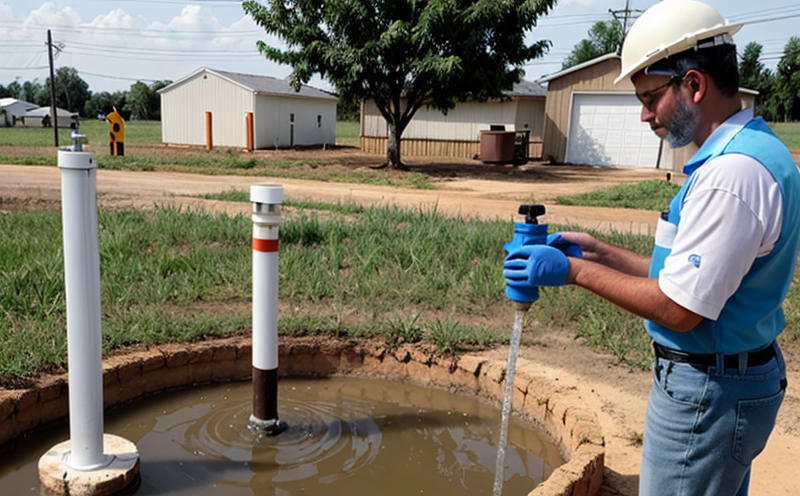EN 14184 Total Organic Carbon Testing
The EN 14184 standard specifies a method for the determination of total organic carbon (TOC) in water and wastewater samples. This testing procedure is critical for ensuring compliance with environmental regulations, safeguarding human health, and maintaining ecological balance. Total Organic Carbon quantifies all the organic compounds present within a given sample, providing insights into contamination levels that can impact water quality.
In the context of groundwater quality testing, TOC analysis plays a pivotal role in assessing the purity of drinking water sources. The presence of excessive TOC may indicate the intrusion of pollutants or the leaching of organic matter from soil and vegetation into the groundwater system. Understanding these parameters is essential for stakeholders involved in the management and protection of natural resources.
The methodology outlined in EN 14184 involves the combustion of the TOC in a high-temperature furnace, resulting in the formation of carbon dioxide (CO2). This gas is then measured using a non-dispersive infrared detector. The precision and accuracy of this technique make it highly reliable for detecting even trace amounts of organic compounds.
For quality managers, compliance officers, R&D engineers, and procurement professionals dealing with water and wastewater testing, TOC analysis according to EN 14184 offers a robust framework to ensure that the standards are met. The test results provide critical data necessary for regulatory reporting and decision-making processes.
Scope and Methodology
| Method | Parameters Measured | Accuracy |
|---|---|---|
| Combustion Analysis | Total Organic Carbon (TOC) | ± 2% relative error |
| Instrumentation | Combustion Furnace, Non-Dispersive Infrared Detector | ±1 mg/L for TOC concentrations ranging from 0.5 to 30 mg/L |
The procedure involves several key steps:
- Sampling: Collect representative water samples following best practices.
- Precipitation and Filtration: If necessary, precipitate and filter the sample to remove inorganic materials.
- Preparation: Dilute or concentrate the sample as required for accurate analysis.
- Analytical Procedure: Inject the prepared sample into the combustion chamber where it is oxidized at high temperatures. The resulting CO2 is detected by an infrared detector.
Industry Applications
| Application | Sample Type | Testing Frequency |
|---|---|---|
| Groundwater Monitoring | Surface Water, Groundwater Wells | Annually for regulatory compliance |
| Industrial Wastewater Treatment | Waste Streams Before and After Treatment | Monthly to ensure efficiency of treatment processes |
| Drinking Water Quality Assurance | Treated Drinking Water Samples | Daily for real-time monitoring |
- Water treatment plants use TOC testing to monitor the effectiveness of their filtration and disinfection processes.
- Regulatory bodies rely on these tests to enforce compliance with water quality standards, ensuring public safety.
- R&D departments utilize this test to explore innovative solutions for organic compound removal from water sources.
Why Choose This Test
The EN 14184 TOC testing offers several advantages:
- Regulatory Compliance: Ensures adherence to international standards such as ISO and EN, providing confidence in meeting regulatory requirements.
- Precision and Accuracy: Offers a high degree of accuracy with minimal error, ensuring reliable data for decision-making processes.
- Comprehensive: Measures all organic compounds present in the sample, providing a holistic view of water quality.
- Rapid Results: Quick turnaround times allow for real-time monitoring and immediate corrective actions if necessary.
The test is particularly beneficial for sectors dealing with environmental protection and public health. It provides actionable insights that can lead to improved resource management, enhanced operational efficiency, and better-informed policy decisions.





